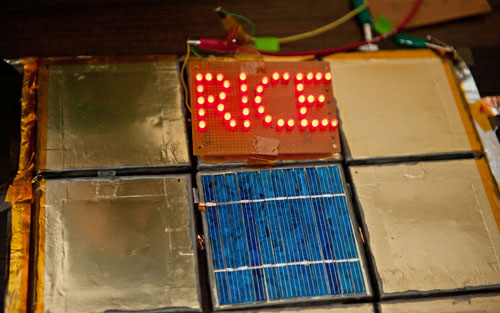
10 Aug Spray On Battery
While screen sizes and storage capacity are increasing, the insides of electronic devices are shrinking.

A beer stein served as an able substrate for a paintable battery developed at Rice University. Photo: Reuters
The results of an experiment conducted by scientists in the United States (published in the journal Nature Scientific Reports) have uncovered a way to shrink the size of a battery in devices to the extent that you can’t even see it.
Researchers from the Rice University in Texas have come up with a technique to break down each element of the traditional battery and incorporate it into a liquid that can be spray-painted in layers on virtually any surface. This rechargeable battery comprises of spray-painted layers, with each representing the components of a traditional battery: two current collectors, a cathode, an anode and a polymer separator in the middle.
Traditional lithium-ion batteries while already quite compact, are limited to rectangular or cylindrical blocks which means:
The liquid battery has already been sprayed onto ceramics, glass and stainless steel. It has also been successfully used on a diverse range shapes, such as the curved surface of a ceramic mug.
There is a limitation on the technology however, which comes in the form of the difficult-to-handle liquid electrolytes as well as the need for a dry and oxygen-free environment when making the new device. To combat this, the team is looking for components that would allow construction in the open air for a more efficient production process and greater commercial viability.
One potential application of this technology, as put forward by Neelam Singh, a member of the project team, could see the technology integrated with solar cells to give any surface a stand-alone energy capture and storage capability.
What this means for mobile devices is both exciting and unfathomable. We could see significantly lighter mobile devices with even more impressive specs. Perhaps this technology will also prompt the development of more wearable mobile devices, such as connected t-shirts or jewellery.
Source: Sydney Morning Herald
Check out the video below to hear from the researchers behind the project:

